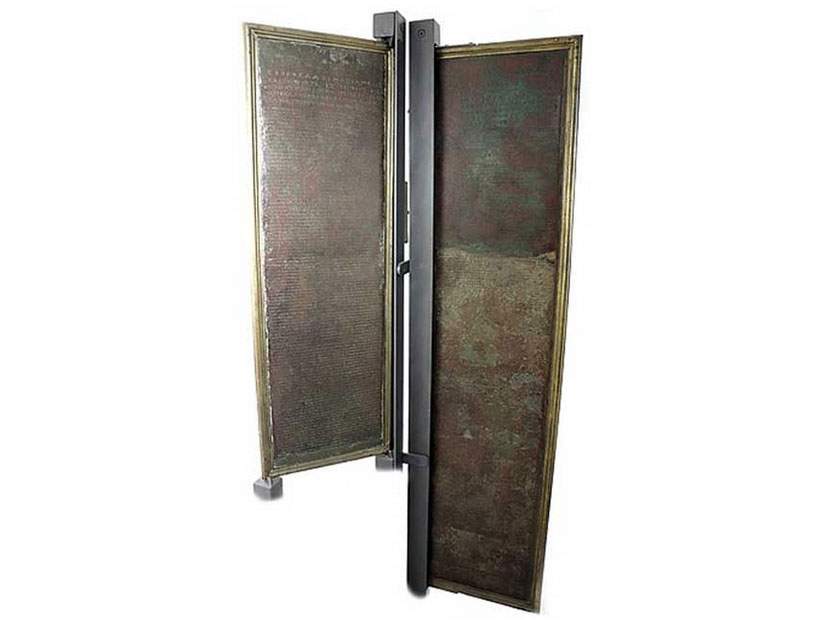The National Archaeological Museum of the Siritide in Policoro(Matera) is celebrating the 50th anniversary of its founding with an exceptional loan: the Herakleia Tablets, found in 1732 near the Cavone River and preserved at the National Archaeological Museum in Naples(MANN), considered among the most important epigraphic documents of Magna Graecia.
These plates are two bronze slabs bearing engravings on both sides, in Greek and Latin, that allow us to reconstruct the transformations of the city of Herakleia from its foundation by Tarentum at the end of the fifth century B.C. to its acquisition of the status of a Roman municipium, attributed to the city, by then Heraclea, in the first half of the first century B.C. The Greek inscription is a regulation for the management of land dedicated to Dionysus and Athena and its redistribution for productive purposes; the Latin one is a compendium of municipal laws of the late republican age. The Tablets are a fundamental document for understanding the social, political and economic history of the Siritide territory. These plates, therefore, constitute the most important inscribed document of Magna Graecia.
The exhibition The Tables of Heraclea. Between Tarentum and Rome, which runs until June 7, aims to interweave the long classical tradition of exegesis of the Tablets with the results of archaeological investigations from the discovery of the famous Tomb of the Painter of Polychorus in 1963 to the excavations and reconnaissance still underway in the city and the territory.
At the same time, the exhibition provides a cue to evoke the more recent phenomenon of the Land Reform of the 1950s - in several respects close to the dynamics that transpire from the Tables - by placing it in parallel with the concomitant start of archaeological explorations in the area, thanks to the farsighted action of Dinu Adamesteanu, the first archaeological superintendent of Basilicata and founder of the Museum.
In dialogue with the two Tables, important and significant artifacts from the chora, the city of Herakleia and other Magna-Greek centers are displayed, in order to reconstruct the city’s history both in its relations with the motherland Taranto and in its articulation with the agricultural territory.
The exhibition is organized by the Polo Museale della Basilicata in collaboration with the National Archaeological Museum of Naples, the National Archaeological Museum of Taranto and the Soprintendenza Archeologia, Belle Arti e Paesaggio della Basilicata. Promoted together with the Municipality of Policoro.
For all information you can visit the official website of the Ministry of Cultural Heritage of Basilicata.
 |
| The National Archaeological Museum of the Siritide in Policoro celebrates its 50th anniversary by exhibiting the Tables of Heraclea |
Warning: the translation into English of the original Italian article was created using automatic tools. We undertake to review all articles, but we do not guarantee the total absence of inaccuracies in the translation due to the program. You can find the original by clicking on the ITA button. If you find any mistake,please contact us.